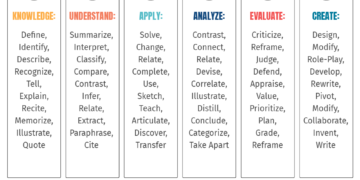Understanding New Technology In The Workplace
New technologies in the workplace like machine learning (ML), Artificial Intelligence (AI), and deep learning transform the way we work.
How Is Technology Changing The Workplace?
The hyper-automation in the workplace represents an opportunity for businesses to accelerate complex process workflow and drive great business value. Some benefits of adopting technologies in the workplace include:
- Streamlining processes with automation
- Unifying communication channels
- Improving decision-making based on analytics
- Helping align the entire organization
- Connecting teams better
- Improving employee productivity and satisfaction
The natural evolution of the workplace has technology as an integral element. However, the COVID-19 pandemic further accelerated the transformation from the traditional work model into today’s digital workplace. Below are some technologies shaping the future of work and how we do business.
Some Technologies Shaping The Future Of Work
1. Talent Acquisition With Virtual Hiring
Recruiters need to eliminate manual paper workflows to win the war for talent in a tight labor market. Instead, human resource teams use platforms that enable virtual hiring processes. Recruiters have long used applicant tracking systems (ATS), which are a great way to attract, identify, and hire the most qualified candidates. Talent acquisition professionals can create a strong pipeline and improve efficiency by automating screening, scheduling interviews, and matching candidates’ skills to a job posting.
However, we are now seeing many organizations use complementary technologies such as candidate relationship management systems (CRM) to create one larger ecosystem. Additionally, we are experiencing widespread adoption of Artificial Intelligence tools to help eliminate bias in hiring decisions and support diversity, equity, and inclusion efforts tied to recruiting. On top of that, technology lessens the administrative burden and gives recruiters more time to focus on human-centric strategies like improving the candidate experience.
2. Supporting Remote And Hybrid Work
It is no surprise that employees enjoy having flexibility in the workplace. In fact, one survey showed that employees overwhelmingly recommend (97%) remote work and would like to continue working remotely. Despite the logistical challenges they bring, remote and hybrid work arrangements are here to stay.
The use of technology plays a vital role in enabling flexibility. Hence, this shift has driven more leaders to invest in software and platforms to support business continuity under these new conditions. As a result, companies invest in collaborative tools, virtual wellness, and workforce management (WFM) platforms. Some tools and technologies that enable flexible working models include:
- Cloud computing and infrastructure
- Cybersecurity tools
- Mobile and collaborative remote safe tools
- Workforce management applications and platforms
Cloud-based WFM systems, self-service apps, and dynamic work-scheduling tools enable maintaining a highly productive workforce, regardless of whether they are in an office setting or working from home.
3. New Tech For Customizable Learning
Companies are no longer using a one-size-fits-all approach to Learning and Development. Advanced Learning Management Systems now provide a personalized approach to reskilling and upskilling employees. Technology has made it possible to identify and close knowledge gaps in each employee. Employees can feel empowered and motivated when they have the opportunity to create their custom learning paths with the type of content and methods that best suit them.
This personalized learning approach allows employees to learn at their own pace through online coaching, eLearning platforms, or Virtual Reality (VR) simulations. Fast-developing Augmented Reality (AR) and Virtual Reality technologies are becoming widely used solutions for training employees and boosting performance.
Additionally, companies are gamifying learning in the workplace to motivate employees. Any mundane task can be turned into a fun game, from new employee orientation to soft skills development. Using a digital environment and principles similar to a game that offers points and rewards motivates employees to reach specific goals or objectives.
4. Analytics And Decision Intelligence
Analytics and business intelligence have become powerful tools that can lead to massive gains for organizations. Analytics can shed light on what’s happening inside the organization by gathering real-time employee productivity, performance, and engagement data. The use of Big Data in the workplace gives executive leadership comprehensive insight into the workplace and gives them accurate information supported by statistics and facts. Therefore, by measuring and analyzing key aspects of the workplace, leaders can make better-informed decisions.
Decision intelligence can help reveal future trends, predict and monitor behaviors, and forecast future talent needs. That is not to say that human decisions will be replaced; rather, they will be enhanced by the power of analytics, AI, and data. In addition, we see analytics being used to personalize people’s experiences, such as using real-life journey maps, organizational network analysis (ONA), skills mapping, and career navigation.
5. Workplace Health And Wellness
A healthy and thriving workforce generates positive business outcomes that have a direct impact on productivity and profitability. As a result, employee well-being is seen as a critical aspect of success and morale. Forward-thinking companies are looking for solutions that balance all aspects of wellness—emotional, physical, and behavioral.
However, when it comes to designing a wellness program, one size fits none. Health is tied to the individual; therefore, a personalized wellness approach is vital for the success of corporate wellness programs. Intelligent analytics, Big Data, and other technologies all tailor corporate wellness programs into the right health solution for employees.
Some of the latest HR tech resources aim to improve the physical well-being of workers through gamification and wearable health technologies. AI-based tools and chatbots can support healthier habits and point out higher health-risk profiles. Some categories of high risk include:
- Lifestyle and physical health risks
Obesity, diabetes, high blood pressure, smoking - Mental health risks
Depression, anxiety, stress, and employee burnout - Workplace safety risks
Repetitive work injuries, poor air quality
By gathering this data, employers can identify patterns and trends to understand their workplace and its employees better.
6. Improving The Employee Experience
Over the last few years, organizations have had to adapt to a radically shifting context for the workplace, workforce, and world of work. The “Great Resignation” and now the “Great Reevaluation” all send an important message to employers and the type of culture they need to retain top talent. Thus, one of the top priorities for human resources departments has become improving the employee experience (EX).
Today, technology is seamed into every aspect of the employee’s journey from start to exit, and every moment in between is part of their employee experience. Employing the right tools and technology is key to improving the digital experience of employees and can empower them. Furthermore, employees must provide feedback to close any gaps and genuinely understand how they engage with the tools available and where there is room for improvement.
7. Recognition And Reward
Technology is also transforming how companies give employees recognition and rewards. In the modern workplace, employees seek instant and fast recognition, which represents a problem for companies with flexible work arrangements or with a large workforce. The use of technology has made it easier to recognize and reward workers in a more effortless and timely manner. Not only that, but employee recognition software programs provide data-driven insights into how job performance and employee engagement are linked to the amount of recognition and rewards given.
Additionally, statistics can identify departments that are consistently hitting targets and enjoying success. Using analytics and technology platforms to administer employee recognition enables organizations to strengthen the relationship with their employees and create a supportive work environment.
What Are The Risks Of The Digital Workplace?
While technology brings a lot of benefits to organizations, there are also some risks that come with it. Acknowledging and understanding the potential dangers of new tools is a critical factor that is transforming the way work is done. Some possible risks of a digital workplace are:
- Increased vulnerability to cyber attacks
- Employee privacy and data collection concerns
- Compliance with government regulations
- Lack of personal connection
- Legal risks of digital tools
- Lower productivity due to digital friction
Undoubtedly, technology provides companies with many opportunities to improve and optimize their work performance. At the same time, employees’ personal data is regularly gathered and potential invasions of privacy are commonplace. The use of advanced technologies can also leave organizations vulnerable to cyber attacks.
In addition, the amount of workplace technology, communication software, and other human resources tools used today can easily overwhelm employees. Digital workers often fail to notice important information and are easily distracted by the number of emails, notifications, and updates. To mitigate these threats of the digital workplace, robust risk management strategies must be established, developed, and regularly reviewed.
Conclusion
The traditional landscape of the business world is continuously transforming, along with the role and importance of technology. Today’s tech innovations aim to make the workplace more efficient and streamlined, and more insightful and smarter for everyone. As such, business leaders need to pay close attention to the latest innovations in tech and leverage technology to realize their business objectives.




















